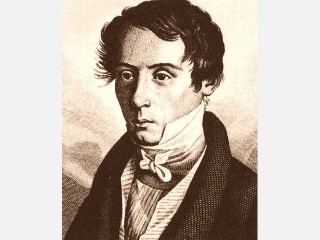
Augustin Jean Fresnel biography
Date of birth : 1788-05-10
Date of death : 1827-07-14
Birthplace : Broglie, France
Nationality : French
Category : Science and Technology
Last modified : 2010-12-29
Credited as : Physicist, ,
The French physicist Augustin Jean Fresnel , through his analysis of interference, diffraction, and polarization, turned the wave theory of light into an integral part of exact physical science.
Augustin Jean Fresnel was born in Broglie on May 10, 1788. He received his elementary education on the family estate in Mathieu, Normandy, where his father, Jacques Fresnel, an architect, took refuge during the stormiest years of the Revolution. At the age of 16 Fresnel entered the ecole Polytechnique, where he excelled in mathematics but made little progress in physics. Following his graduation, Fresnel worked as an army engineer. In Nyons in early 1815, during the Hundred Days, he joined a group of royalists, and in the end he was decommissioned and sentenced to confinement. Because of ill health he was permitted to live in Normandy with his mother.
Fresnel began his research on light by attempting to understand the polarization of light, about which he read by chance in the newspaper. His knowledge of the subject was woefully inadequate, and not much better was his familiarity with physics in general. However, Fresnel persevered with his readings and carried out some experiments with simple apparatus. The first thing to be explained by the wave theory of light was the apparent failure of light waves to bend around a "corner" or edge, at complete variance with the behavior of water waves and sound waves. Fresnel showed that from the wave theory there followed a slight bending, and that it had to manifest itself in a succession of dark and luminous bands at the edge of the shadow. Most importantly, his mathematical formalism of the wave theory of light could predict the exact width of each of those bands.
Fresnel did not have a lens of short focal length, which he needed for the experimental verification of his theory. He found that an ingeniously suspended drop of honey would do the job!
Fresnel's Memoirs, which contained these important results together with his wave theory of light, were deposited at the Academy of Sciences in October 1815. According to the theory, the longitudinal waves, assumed by previous investigators such as Thomas Young, were replaced by transverse waves. Shortly afterward, Fresnel extended his idea of light as being the transversal vibration of an elastic medium (ether) to the problem of polarization. His ideas produced both admirers and opponents, but the theory had an unqualified effect on all future considerations of the geometrical and photometrical aspects of light and its relationship with space and matter. For this work Fresnel was elected in 1823 to the Academy of Sciences, and in 1825 he became a foreign member of the Royal Society of London, which in 1827 awarded him the Rumford Medal.
It was rare in the history of science that a most influential and solidly developed theory should emerge within a few years and in the hands of a newcomer to physics. Such a short span of time was also symbolic of the short life-span allotted to Fresnel. But those few years cast a long shadow on the subsequent history of physics. A starting point for modern relativistic physics was Fresnel's prediction of the change in the speed of light in moving media. The modern photon theory of light is also a development that left intact the validity of his basic insights into the mathematical formalism that alone can account for the most common features of the propagation of light.
Although Fresnel's health was rapidly deteriorating, he worked on the improvement of lighthouse lanterns. He replaced metal reflectors and thick lenses with lenses built from annular rings, the centers of curvature of which varied progressively and consequently eliminated spherical aberration. He also combined a fixed and a flashing light as a means of increasing the intensity of the light periodically. He died at Ville-d'Avray near Paris on July 14, 1827.
The most complete work on Fresnel is in French. A lengthy and informative eulogy of Fresnel is available in Francois Arago, Biographies of Distinguished Scientific Men (trans., 2 vols., 1859). The standard presentation of the full impact of Fresnel's ideas about light on 19th-century physics is in E. T. Whittaker, A History of the Theories of Aether and Electricity, vol. 1 (1910; rev. ed. 1951).
















